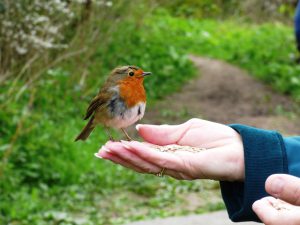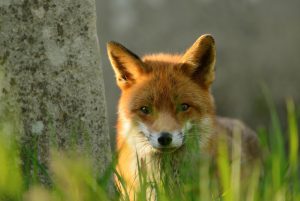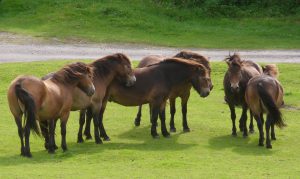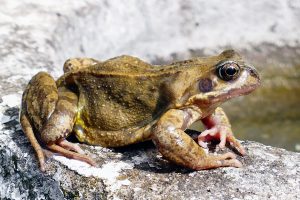Winter is the coldest and darkest time of year. While we’re keeping warm in our heated houses and warm clothing, the rest of Britain’s wildlife are taking their own steps to ensure they survive the winter. With the lack of food, heat and short days, how do they manage it? Let’s take a look at six of the UK’s toughest wildlife.
The Robin
These common birds are widely recognised as a symbol of Christmas in the UK. This is because Victorian postmen were nicknames “robins” due to their red-breasted coloured uniforms and so came to represent the postman who delivered the card.
They are also widely seen throughout winter and have a very clever way of keeping themselves warm, by fluffing up their feathers, increasing the amount of air next to the body. They can then trap the air using their multiple layers of feathers, acting as a fantastic insulator!
Of course, they also consume calories by foraging for berries and insects using their sharp eyes.
Robins can be found in most places around the UK! Add a bird feeder and some nice bushes to your garden and they’ll be right on your doorstep. If you’re in the Tame Valley Wetlands area, then why not visit RSPB Middleton Lakes, grab some bird seed and have a unique experience with their local robins.
The Red Fox
Finding food for the red fox is tough in the winter. With all of its prey hiding out of the cold weather, it can be difficult to get a good meal. Fortunately, the fox has extra sharp hearing! The slightest rustle or squeak can be heard from as far as a football pitch away, allowing them to find whatever food is available.
Keeping warm isn’t too much of a problem for them either. By growing longer and thicker winter coats, they are well insulated and tend to curl up in a ball, using their long bushy tail as a blanket.
Foxes are very common and can be found both in the countryside and cities. Best places to see them in the Tame Valley Wetlands would be to visit one of the wetland nature reserves, where they tend to prey on the wetland birds that flock. – RSPB Middleton Lakes, WMBC Ladywalk nature reserve (members only), Tameside Local Nature Reserve (LNR).
The Exmoor Ponies
Surviving on the harsh Exmoor moors is never easy, especially when you have a poor diet and are unsheltered from the elements.
The Exmoor ponies are a truly incredible species though, surviving for over 10,000 years, with little change from their ancestors, they have managed to adapt to the toughest of conditions.
Developing a tough coat and mane, they are virtually waterproof and well insulated. Snow can build up on their backs and not melt due to their special adaptation!
Konik Ponies
Here in the Tame Valley Wetlands, we have Konik ponies. These Polish ponies are fantastic for wetland habitats and have been used all over the UK to restore reserves due to their grazing habits.
They are very intelligent and can live on a limited amount of food. They can even slow their growth progress when times get tough, for example in the winter when there is a lack of food. They also have a strong immune system which allows them to brave the toughest of weather! This is pretty amazing considering the Polish winter is far colder than the British, which has allowed them to adapt to temperatures of -40 degrees.
You can find these grey/mouse coloured ponies at RSPB Middleton Lakes. They are wild with a tame side and can sometimes be seen grazing across the reserve.
The Otter
Playful and cute, the otter is a loved mammal by many and yet their conservation status is near threatened. That being said, they are an all year round, happy animal with its dense fur to keep it cosy throughout the harsh winters. As a top predator, they tend to feed primarily on fish but will also dabble in a little bird, frog, crab and crayfish if the opportunity arised.
They do not hibernate through the winter period and remain active looking for food.
The otter is a difficult creature to spot. The best way is to look for its scat, usually around rivers. You can find them in the Tame Valley Wetlands, on the River Tame where they have made a comeback after being extinct in the area. This was due to the industrial revolution, which caused the River Tame to be inhabitable and very poor quality.
The Common Frog
These amphibians tend to lie dormant over the winter, slowing their metabolism down and waiting out the cold weather. They can be found at the bottom of ponds, buried under the silt or in compost heaps and amongst dead wood.
They take in oxygen through their skin when dormant under water, but can sometimes be seen on milder days swimming underneath the icy ponds, looking for oxygen pockets or to forage.
These common frogs can be found all across the country. If you have a pond, you may even get them in your garden! Best places to find them in the Tame Valley Wetlands, is to visit one of the many reserves. Kingsbury Water Park’s Community Wetlands is a great spot! There are also local nature reserves, such as Hodge Lane LNR and Tameside LNR.
The Black Slug
This slug is a remarkable survivor. Sometimes getting caught out when the temperature drops, their slimy bodies can freeze. Luckily for them though, if the conditions are not too harsh and they are not subjected to it for too long, an adult black slug can partially freeze and then come back to life again!
Slugs tend to spend the winter out of the exposure of the elements, finding shelter in pockets of soil. They can also be found under logs and in cracks in walls.
Where to find a black slug? Take a few steps out your front door! In the winter period, they may be harder to find, so find a pile of wood and see whether it has any residents. Best bet is to find woodland in the Tame Valley Wetlands. There is plenty of it about, but if you’re not sure… visit our directory of wild places.









